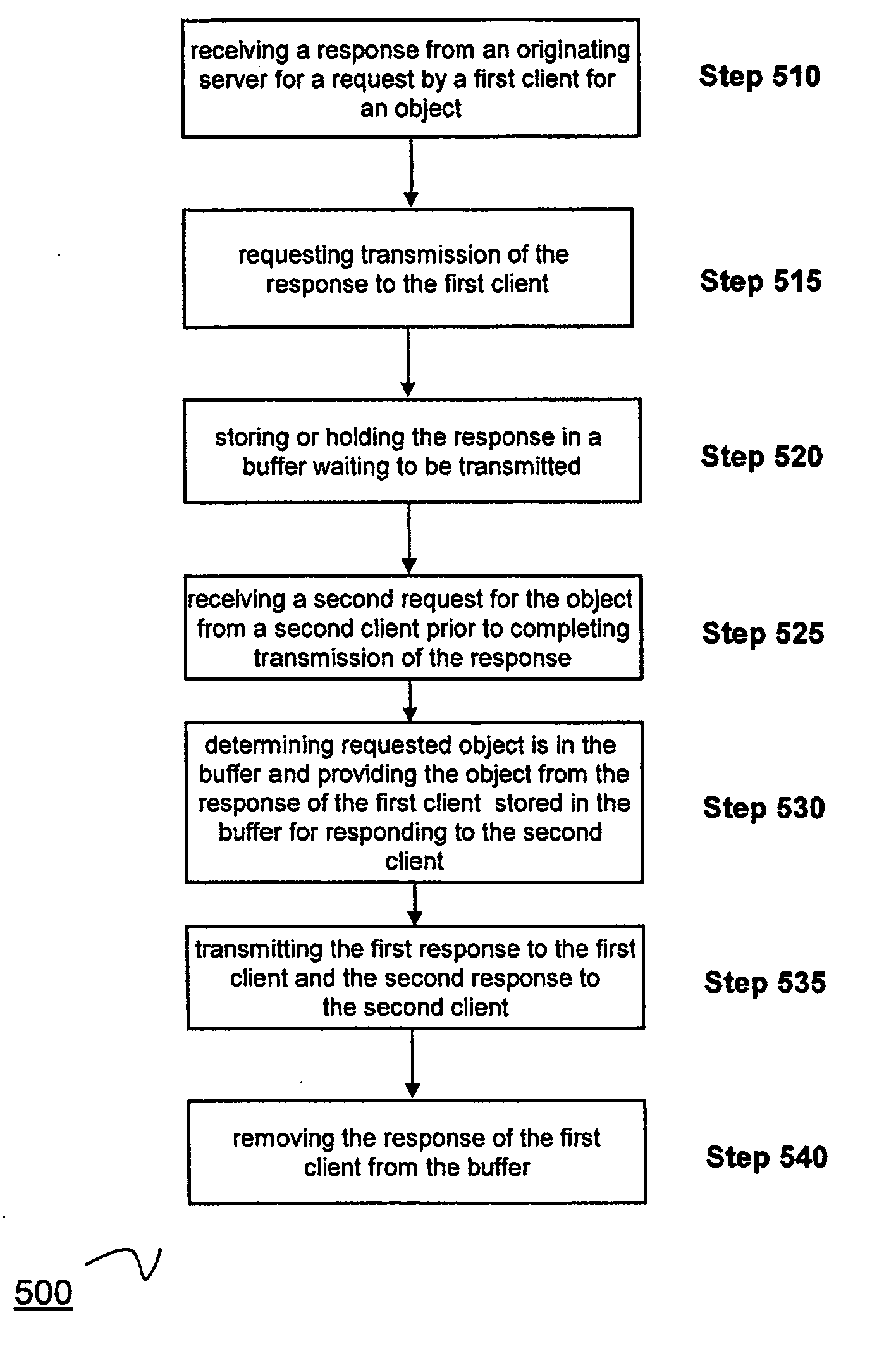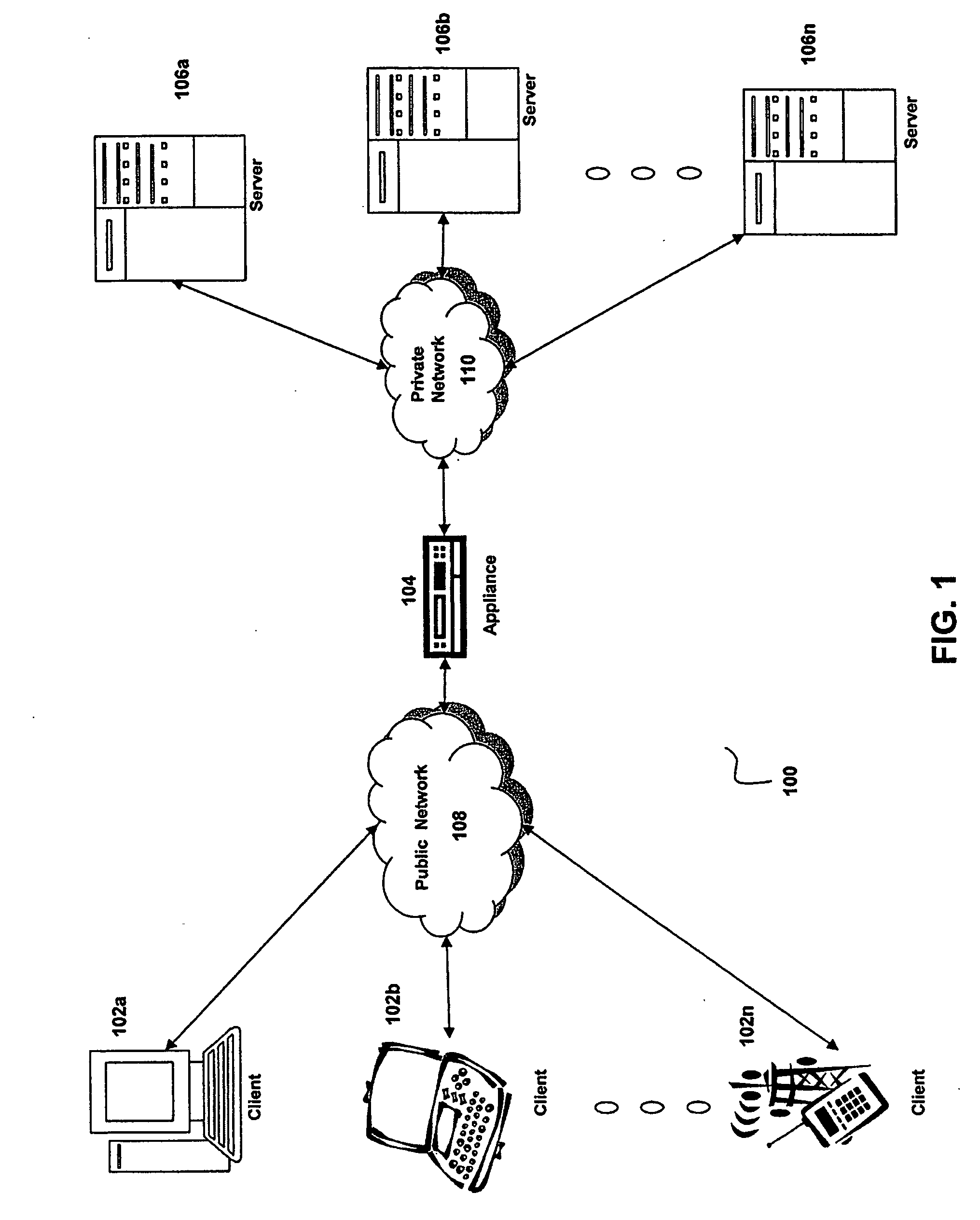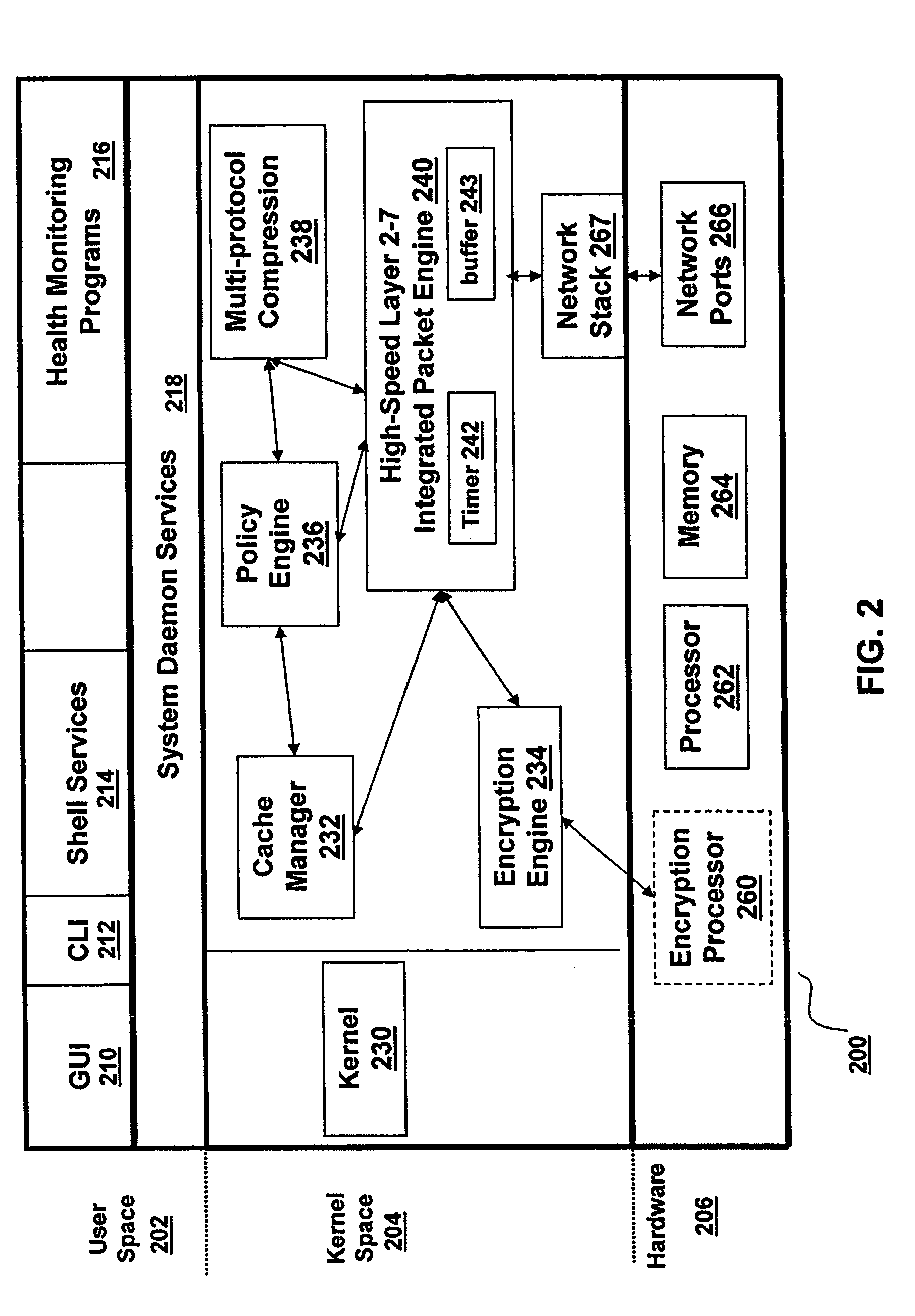Method and device for performing caching of dynamically generated objects in a data communication network
a dynamically generated object and data communication technology, applied in the field of cache memory, can solve the problems of irregular and unpredictable changes to the underlying data used to generate such objects, the growth rate of network traffic continues to strain the infrastructure that carries that traffic, and there are no generally accepted standards or specifications for caching dynamically generated content, etc., to achieve effective processing, increase the ability of cache memory, and increase application performance
- Summary
- Abstract
- Description
- Claims
- Application Information
AI Technical Summary
Benefits of technology
Problems solved by technology
Method used
Image
Examples
Embodiment Construction
A. Example Network Environment
[0040]FIG. 1 illustrates an example network environment 100 in which an embodiment of the present invention may be practiced. As shown in FIG. 1, example network environment 100 includes a plurality of clients 102a-102n, a plurality of servers 106a-106n., and an appliance 104, which may also referred to as a cache appliance, device, or cache. The servers 106a-106n originate and manage databases, such as object or relational databases, that provide requested content to the clients 102a-102n. For this reason, the servers 106a-106n are sometimes referred to herein as “originating servers” because they typically, though not necessarily, originate the objects forming the requested content. Each of the clients 102a-102n and servers 106a-106n may be any type and form of computing device, such as the computing device 800 described in more detail later in conjunction with FIGS. 8A and 8B. For example, any of the client 102a-102n may be a mobile computing device,...
PUM
 Login to View More
Login to View More Abstract
Description
Claims
Application Information
 Login to View More
Login to View More - R&D
- Intellectual Property
- Life Sciences
- Materials
- Tech Scout
- Unparalleled Data Quality
- Higher Quality Content
- 60% Fewer Hallucinations
Browse by: Latest US Patents, China's latest patents, Technical Efficacy Thesaurus, Application Domain, Technology Topic, Popular Technical Reports.
© 2025 PatSnap. All rights reserved.Legal|Privacy policy|Modern Slavery Act Transparency Statement|Sitemap|About US| Contact US: help@patsnap.com



